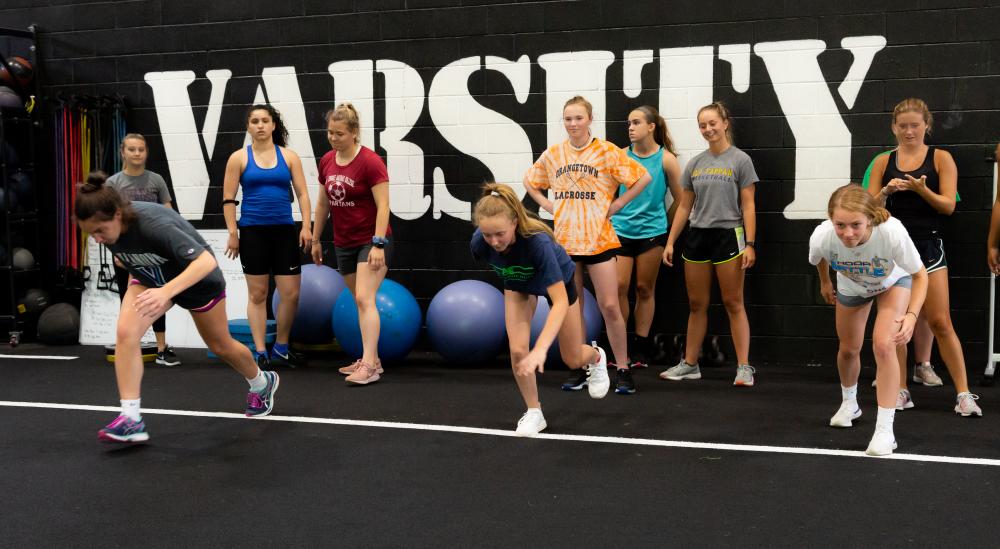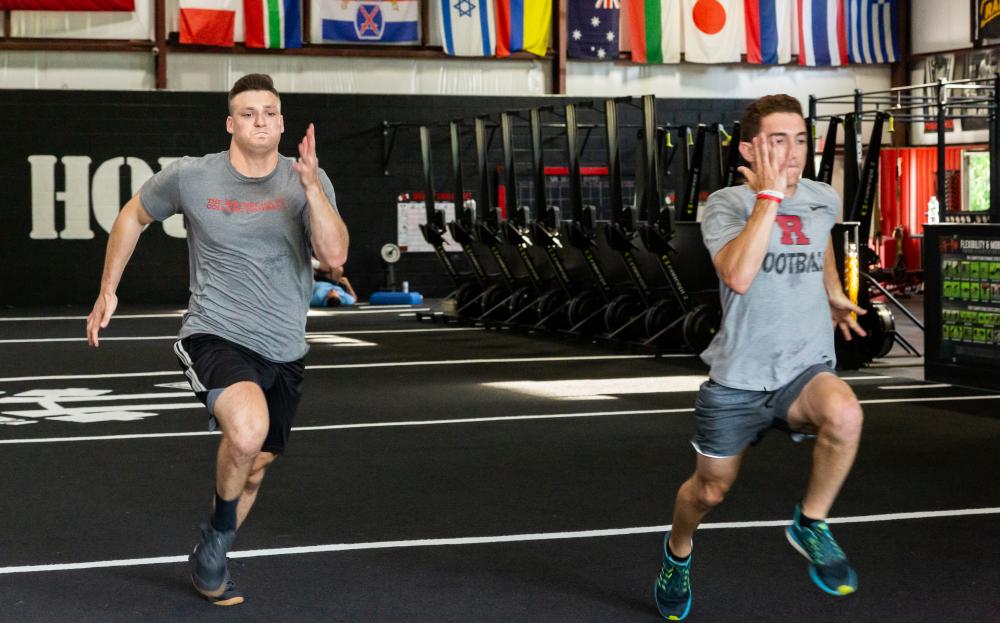To put it simply, SPEED is the ultimate weapon in athletics.
I’m sure if you were to ask any athlete what ability they would most like to possess, it would be speed!
Speed makes the difference between average, good, and great players.
The evolution of sport has dramatically changed over the last 5 years. If you look across the landscape of all sports, the rules have changed to make the pace of player FASTER.
Speed is the foundational process for dominating your sport.
Unfortunately, it seems a lot of coaches, parents, and athletes are unaware of what it means to TRULY train for speed.
I’m here to set the record straight!
I want to bring light to the 9 MOST Powerful Speed Training Truths.

The 9 Irrefutable Powerful Speed Truths
As a coach or athlete it is imperative that you understand HOW TO TRAIN FOR SPEED. If you are prescribing methods for an athlete who is not training according to the information being provided below – it’s time to reconsider your efforts.
These are important to know from a coaching and programming standpoint. Again, no matter the sport – these all hold true.
1. Running is Not Sprinting
If you stop reading here, you’ve learned something most people don’t understand. Sprinting is something you can do for a short period of time and requires full recovery to repeat. If you’re doing 10×10 yard get up sprints with minimal rest, by sprint 5 you might as well stop training for the day.
2. Running Does Not Improve Speed
When coaches encourage their players to run at full-speed over a three-hour practice, they are confused. No one can run at full-speed for three hours.
Yes, you can try to do your best over a three-hour period but it won’t be “full-speed”. Running is sub-max. Full speed is max-speed. Max-speed is sprinting. Running makes you good at sub-max running. Sprinting improves speed.
3.Simply Strength Training Alone WILL NOT Improve Speed.
Lifting weights will improve strength. That strength may transfer to greater force production and athleticism but won’t directly improve speed. The strongest kids on the team are only seldom the fastest. In my opinion, a reasonable set of physical pre-requisites for faster individuals include favorable body compositions, relative body strength, are gifted genetically, and possess a high level of technique.
Strength coaches will tell you that lifting weights is the be all end all, but remember, when you ask a barber if you need a haircut, he will always say yes.
4. Racehorses Are Not Workhorses
This will offend most coaches but it’s a fact. Horses that plow a field all day can’t win a race. Too many coaches take thoroughbreds and force them to plow fields. If you want a fast team (and who doesn’t?), treat all your horses like race horses. Train them for speed, not work because there is a place for that, but not while trying to improve speed/power.
5. Sprinting is the Most Explosive Exercise in the World
Nothing in the weight room moves at 10 meters per second. The most explosive lifts may approach 2 m/sec. I’m not telling people not to lift, but sprinting, in and of itself, builds functional strength that directly transfers to athleticism.
6. Any Fool Can Get Another Fool Tired
Know-nothing coaches often work their kids the hardest. Toughness wins! I believe toughness, to an extent, is just as genetic as speed. Coaches don’t create toughness by designing crushing workouts. Even if hard work created toughness, I would still opt for fast, energetic athletes. Slow and tired athletes lose no matter how tough they are. If you want fast kids, work smarter, not harder.
7. We Are Not the Result of What We Did Yesterday
We are the sum of what we did for the last six weeks, the last six months, and the last six years. Every training session, within a program should build upon itself to reach a desired outcome. If you are just stringing sessions together, you’re not doing your job. Speed grows like a tree.
Stay patient. Constantly testing and evaluating are keys to any well thought our program to ensure your athletes are getting better.
8. Beware of “The Grind”
Any coach who embraces “The Grind” is not a speed-based coach. Let me explain, you don’t train a racehorse by grinding unless you want to improve its ability to plow fields. Grinding improves grinding, not speed. Coaches are addicted to slogans and paramilitary thinking.
Coaches live in constant fear of getting out-worked. You must work hard and sacrifice in order to be the best. However, the “Grind” is 365 – 24/7 which includes never missing sessions, eating well all the time, giving up alcohol, doing the little things before, and after.
Not just showing up and getting a “good session” in. Great athletes and great teams are a combination of smart training, enthusiasm, talent, and luck.
9. Sprinting Improves Sprinting
No one gets fast by running slow. Recently, I have implemented auto-regulation into the programming of all the athletes I train. In one of our newsletters, I talk about how I regulated the days training based off how the athletes felt and moved.
Now, I never train tired athletes. I never train beaten and battered athletes. Rest, recovery, and enthusiasm are more important than any workout. Obviously, they pay money to train, so we still give them a good session.

However, that session consists of what they need at the moment not what they want. If I want to train kids two days in a row, I make sure today’s workout does not ruin tomorrow’s workout.
If you’re interested in getting FAST this Fall, click HERE.
-Adam Menner

Recent Comments